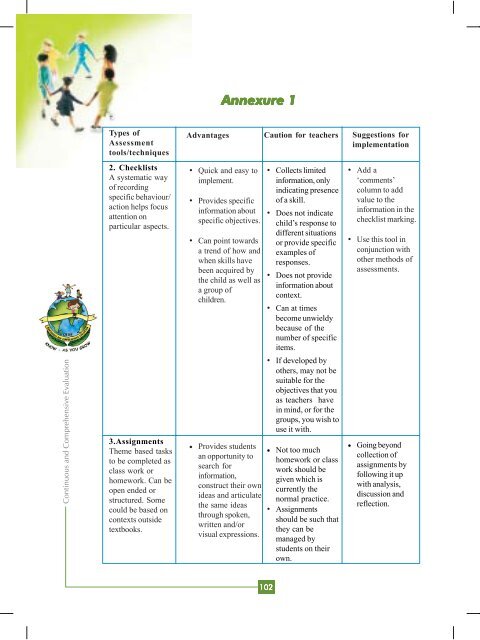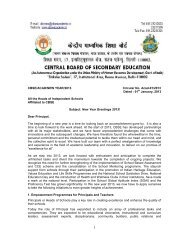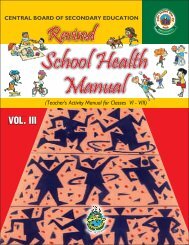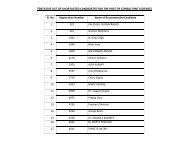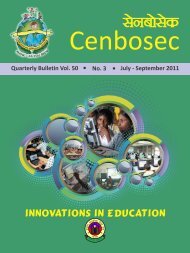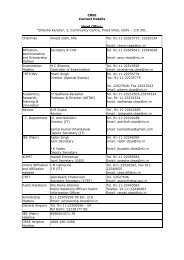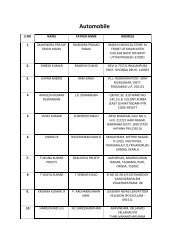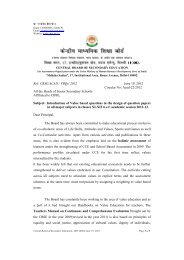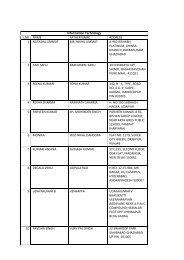CCE Manual VI - VIII - CBSE
CCE Manual VI - VIII - CBSE
CCE Manual VI - VIII - CBSE
You also want an ePaper? Increase the reach of your titles
YUMPU automatically turns print PDFs into web optimized ePapers that Google loves.
Annexure 1Types ofAssessmenttools/techniquesAdvantagesCaution for teachersSuggestions forimplementation2. ChecklistsA systematic wayof recordingspecific behaviour/action helps focusattention onparticular aspects.• Quick and easy toimplement.• Provides specificinformation aboutspecific objectives.• Can point towardsa trend of how andwhen skills havebeen acquired bythe child as well asa group ofchildren.• Collects limitedinformation, onlyindicating presenceof a skill.• Does not indicatechild’s response todifferent situationsor provide specificexamples ofresponses.• Does not provideinformation aboutcontext.• Can at timesbecome unwieldybecause of thenumber of specificitems.• Add a‘comments’column to addvalue to theinformation in thechecklist marking.• Use this tool inconjunction withother methods ofassessments.Continuous and Comprehensive Evaluation3.AssignmentsTheme based tasksto be completed asclass work orhomework. Can beopen ended orstructured. Somecould be based oncontexts outsidetextbooks.• Provides studentsan opportunity tosearch forinformation,construct their ownideas and articulatethe same ideasthrough spoken,written and/orvisual expressions.• If developed byothers, may not besuitable for theobjectives that youas teachers havein mind, or for thegroups, you wish touse it with.• Not too muchhomework or classwork should begiven which iscurrently thenormal practice.• Assignmentsshould be such thatthey can bemanaged bystudents on theirown.• Going beyondcollection ofassignments byfollowing it upwith analysis,discussion andreflection.102


